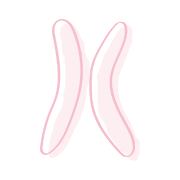
More than 66,000 cases
have been carried out
Hiro Clinic is in cooperation with 125 partner clinics,
performs more than 1,000 examinations per month
Hiro Clinic has conducted more than 66,000 tests from June 2020 to February 2025. In cooperation with the Tokyo Sanitary Laboratory, we have verified the ‘most appropriate test content for pregnant women’.
This data analysis was conducted under the following conditions.
-
No age limit for inspections

-
No restrictions on target chromosomes

-
Pregnant women in Japan only

What results are obtained in the absence of the ’35+ age limit’ recommended by the NIPT Consortium? This has not been examined to date.
Of course, the positivity rates for chromosomes 21, 18 and 13 have been reported, but data on all other autosomes (including sex chromosomes) and whole-region partial deletions and duplications have not been reported in Japan.
In NIPT studies worldwide, genetic disorders are known to have ethnic and regional characteristics.
However, despite various research data, mainly from Europe and the USA, but also from Asia, there have been no reports of data on genetic disorders restricted to pregnant women in Japan.
Hiro Clinic NIPT wishes to publish the test results obtained from previous tests and to help pregnant women in their choice of tests. Hiro Clinic NIPT places the utmost importance on protecting the right to know of all concerned parties, including pregnant women.
| Total (number) | 33,670 people | |
|---|---|---|
| 35 years old and over | 16,175 people | 48.0% |
| Under 35 years old | 17495 people | 52.0% |
| Oldest of the positives | 49 years old | |
|---|---|---|
| Youngest of the positives | 22 years old |
| Number of positive patients | 895 people | 2.66% |
|---|---|---|
| Positive cases over 35 years old | 611 | 3.78% |
| Positive cases under 35 years old | 284 | 1.62% |
According to the latest examination statistics, 48.0% of pregnant women are over 35 years old. This clearly shows that the number of pregnant women under 35 years old being examined is increasing.
In Hiro Clinic NIPT, the overall positive rate is 2.66%; the positive rate for those aged 35 years and over is 3.78%, 2.36 times the positive rate for those under 35 years (1.62%). This is because there are actually around three times more births under the age of 35, so the estimated number of abnormalities under 35 is approximately 1.27 times (= 3 ÷ 2.36) higher than the number of abnormalities over 35. This figure has been increasing, as it was 0.96 times higher when statistics were previously collected. This may be due to the fact that not only trisomy but also partial deletion duplication and microdeletion are age-independent tests and the number of such tests is increasing.
| All Positive Locations(Locations) | Number of positives (persons) | 35 years old and over (persons) | Under 35 years old (persons) | |
|---|---|---|---|---|
| No. 21 Trisomy | 258 | 260 | 203 | 55 |
| No. 18 Trisomy | 158 | 158 | 126 | 32 |
| No. 13 Trisomy | 49 | 50 | 31 | 18 |
| Sex chromosome | 138 | 138 | 78 | 60 |
| Other autosomes | 176 | 185 | 108 | 68 |
| Whole autosomal regionPartial deletion /duplication disease | 116 | 130 | 65 | 51 |
| Total | 895 | 921 | 611 | 284 |
※Cases with multiple diseases are counted as each disease.
Of those who tested positive, 28.8% had chromosome 21 trisomy, 17.7% had chromosome 18 trisomy and 5.5% had chromosome 13 trisomy, accounting for 52% of the total. On the other hand, aneuploidy (abnormal number of chromosomes) of chromosomes other than chromosomes 13, 18 and 21 accounted for 19.7% of autosomes and 15.4% of sex chromosomes, together accounting for 35% of the total.
Whole-region partial deletions and duplications may have various clinical findings depending on their size and location. However, as the number of whole-region partial deletions and duplications detected by the Hiro Clinic NIPT is more than 7 million bases, even if 2% of these are considered to be in the exonic region, monosomy and trisomy of approximately 140 000 bases are possible, which may lead to some disorders in patients with this disease.
29,269 ‘test coverage’ of NIPT testing (Feb 2023).
Test coverage indicates the percentage of cases that are positive for the selected test plan.
| No. 21 | No. 18 | No. 13 | Sex chromosome | Other autosomes | Whole autosomal region Partial deletion/duplication | |
|---|---|---|---|---|---|---|
| Positive Locations | 205 Locations | 120 Locations | 43 Locations | 123 Locations | 179 Locations | 150 Locations |
| Number of positives | 205 people | 120 people | 43 people | 123 people | 179 people | – |

The bar graph above shows the numerical ‘test coverage’ of the test plans that pregnant women often choose at Hiro Clinic NIPT.
If Basic Plan O is selected as the test item, the test coverage is 50%, whereas Basic Plan B has 87% coverage which is recommended for pregnant women aged 35 and over.
A test coverage of 50% indicates that 50% of diseases are returned negative.
Basic Plan F is the most popular plan at Hiro Clinic NIPT. This plan is recommended for those who do not want to miss any results.
Statistical data on over 66,000 cases
Statistics relating to maternal age



Statistics relating to T21

T18: Chromosome 18 trisomy
T13: Chromosome 13 trisomy
RAA: aneuploidy of chromosomes 1 to 22 (excluding chromosomes 21, 18 and 13)

T18: Chromosome 18 trisomy
T13: Chromosome 13 trisomy
RAA: aneuploidy of chromosomes 1 to 22 (excluding chromosomes 21, 18 and 13)
SCA: Sex chromosome aneuploidy
Partial dup/del: partial duplication/underexpression of the whole autosomal region

Statistics relating to T18

Statistics relating to T13

 中文
中文










